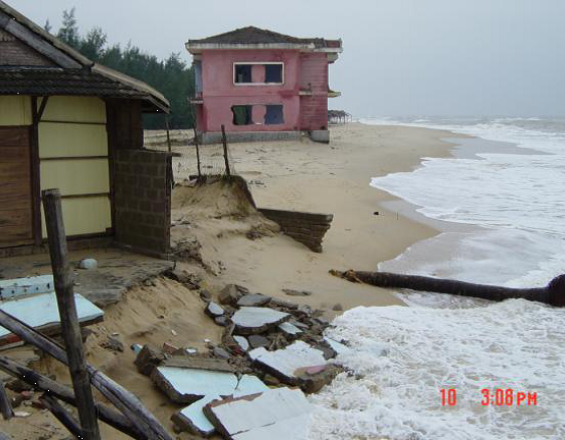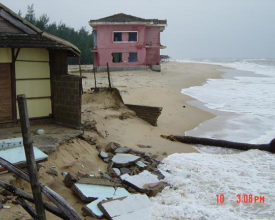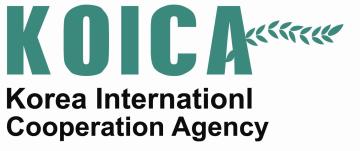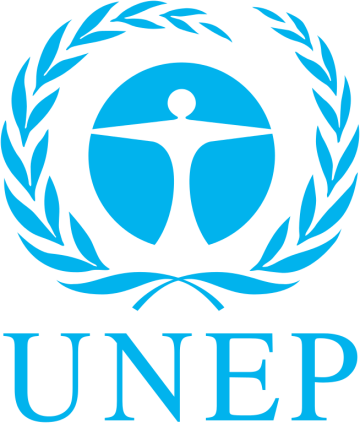
Stratégie régionale de gestion de l'érosion côtière
Solution complète

L'érosion côtière au Vietnam.
Le Van Cong
La stratégie régionale traite de l'érosion côtière due à l'élévation du niveau de la mer, des lacunes politiques et opérationnelles dans six pays des mers d'Asie de l'Est. Les autorités nationales évaluent le contexte national, les lacunes et les besoins et identifient les orientations et les actions prioritaires pour lutter contre l'érosion côtière. Les rapports nationaux sur les résultats et les recommandations sont présentés, discutés et approuvés grâce à la participation du public et à un processus de consultation nationale avec toutes les parties prenantes.
Dernière modification 30 Sep 2020
8235 Vues
Contexte
Défis à relever
L'érosion côtière induite par l'élévation du niveau de la mer menace les écosystèmes, les communautés et les économies côtières dans six pays littoraux d'Asie de l'Est. La stratégie fournit un cadre régional et des orientations pratiques pour combler les lacunes opérationnelles et politiques. Elle renforce la capacité des parties prenantes des pays participants à gérer efficacement les ressources côtières et les écosystèmes associés.
Emplacement
Asie
Asie du Sud-Est
Traiter
Résumé du processus
L'évaluation nationale de la vulnérabilité à l'érosion côtière due à l'élévation du niveau de la mer (bloc 1) doit être approuvée par toutes les parties prenantes dans le cadre d'une réunion de consultation nationale (bloc 2) afin de garantir une mise en œuvre réussie, en particulier des activités prioritaires et des projets pilotes. Les rapports d'évaluation nationaux finalisés (bloc 1) et approuvés conjointement (bloc 2) sont la condition préalable à l'élaboration du rapport d'évaluation régional (bloc 3) qui résume les principaux faits et recommandations pour chaque pays. La prise de conscience et la reconnaissance de la nécessité de la gestion de l'érosion côtière pour accroître la résilience côtière et assurer les moyens de subsistance des populations, ainsi que le soutien et l'engagement des gouvernements nationaux et des partenaires de développement sont des facteurs de réussite de chaque élément de base et de la solution.
Blocs de construction
Évaluation nationale de la vulnérabilité des côtes
L'évaluation nationale - analyse de la situation - de la vulnérabilité côtière fournit une vue d'ensemble détaillée des états d'érosion en appliquant un format standardisé convenu par tous les pays participants. Elle inclut les politiques pertinentes, les mécanismes juridiques et institutionnels, les lacunes et les besoins, ainsi que les interventions pertinentes pour lutter contre l'érosion côtière aux niveaux national et infranational. Les priorités d'action (interventions pilotes) à mettre en œuvre par les gouvernements sont définies.
Facteurs favorables
Conditions d'adoption ailleurs : - Prise de conscience et reconnaissance du problème de l'érosion côtière et de l'élévation du niveau de la mer, ainsi que de l'importance et de la valeur des évaluations nationales pour traiter le problème ; - Soutien et engagement sans réserve des gouvernements et autorités nationaux, y compris des partenaires de développement ; - Prise de conscience et reconnaissance de l'importance et de la valeur des évaluations nationales pour traiter le problème.
Leçon apprise
La gestion de l'érosion côtière implique une série de ministères et d'autorités à différents niveaux gouvernementaux. Les rapports nationaux évaluant le contexte national et l'ampleur du problème de l'érosion côtière serviront de référence majeure pour le développement de nouveaux plans, politiques, stratégies et programmes nationaux ou pour la mise à jour des plans, politiques, stratégies et programmes nationaux existants sur la gestion intégrée des côtes aux niveaux national et local. Avec des activités spécifiques de renforcement des capacités et des interventions pilotes identifiées, les rapports nationaux pourraient être intégrés dans un rapport régional qui pourrait ensuite être utilisé dans le développement de futurs programmes régionaux pour la gestion de l'érosion côtière en vue d'une mise en œuvre régionale.
Réunion de consultation nationale
Réunir toutes les autorités nationales compétentes et les parties prenantes lors d'une réunion organisée par l'institution nationale responsable de la gestion côtière afin d'échanger toute information pertinente sur l'érosion côtière et de sensibiliser les autorités nationales et locales aux problèmes et aux besoins liés à l'érosion côtière. Présenter toutes les conclusions et recommandations, en particulier les interventions pilotes à développer et à mettre en œuvre par chaque pays, en vue d'un accord commun.
Facteurs favorables
Conditions d'adoption ailleurs : - Prise de conscience du problème - Engagement et soutien des gouvernements et des autorités nationales pour définir et appliquer la solution en vue d'une gestion efficace des côtes.
Leçon apprise
L'engagement et le soutien des gouvernements et des autorités nationales pour la mise en œuvre de toutes les étapes nécessaires de la solution pour une gestion efficace et durable de l'érosion côtière est un facteur clé de succès. L'établissement de Points focaux nationaux de projet (PFNP) dans chacun des pays participants facilite la mise en réseau entre le projet et toutes les autres parties prenantes aux niveaux local, national et régional. Les consultations nationales avec les autorités nationales et les parties prenantes sont primordiales pour établir un dialogue transparent et une coopération entre tous les partenaires concernés, pour s'assurer que les informations essentielles et le savoir-faire sur les problèmes à résoudre sont partagés. Les réunions de consultation nationale se sont avérées cruciales pour garantir des discussions communes et l'accord de toutes les parties prenantes. Elles encouragent l'apprentissage mutuel et la constitution d'équipes, tout en renforçant la coopération, la coordination et le dialogue entre et parmi les parties prenantes.
Rapport d'évaluation régionale
Résumer les évaluations nationales dans un format standardisé afin de fournir la base et un livre de ressources pour un cadre de gestion intégrée des zones côtières durable et basé sur l'écosystème. Récapituler des informations précieuses pour la gestion efficace de l'érosion côtière à l'échelle régionale afin d'améliorer la résilience côtière et, par conséquent, de réduire les impacts de l'élévation du niveau de la mer sur les écosystèmes, l'économie, la sécurité, la santé, la qualité de vie et les moyens de subsistance des populations.
Facteurs favorables
Conditions d'adoption ailleurs : - Informations sur les politiques, les mécanismes juridiques et institutionnels, - Connaissances sur les interventions et le soutien au développement passés, actuels et prévus, - Lacunes et besoins en matière de politiques, de capacités, de dispositions institutionnelles et de cadres réglementaires, - Identification, hiérarchisation et budgétisation des activités, - Conception et planification d'interventions pilotes spécifiques, fondées sur les besoins et susceptibles d'être reproduites ou élargies à l'avenir.
Leçon apprise
- non disponible -
Impacts
La solution renforce les capacités des autorités nationales. Elle constitue une référence essentielle pour l'élaboration ou la révision de plans, de politiques, de stratégies et de programmes de gestion intégrée des côtes aux niveaux national et local. Les exercices nationaux d'évaluation et de consultation permettent aux autorités nationales et locales de mieux faire face aux principaux impacts de l'érosion côtière et à la vulnérabilité des communautés. La mise en œuvre d'interventions prioritaires ou pilotes témoignera de l'efficacité de la résilience des écosystèmes, des moyens de subsistance des communautés locales et des politiques et stratégies nationales.
Bénéficiaires
Communautés côtières et administration, autorités nationales et société civile à grande échelle.
Histoire
Avec un long littoral, l'érosion côtière est une menace constante pour le Vietnam et s'aggrave en raison de la multiplication des tempêtes et de l'élévation du niveau de la mer causée par le changement climatique, ont indiqué des experts lors d'un atelier à Hanoi le 17 juillet 2013. S'adressant à l'atelier, qui a examiné le rapport d'évaluation nationale sur l'érosion côtière, le directeur adjoint de l'administration vietnamienne des mers et des îles, Vu Si Tuan, a déclaré : "Le Viêt Nam a mis en œuvre toute une série de programmes à différents niveaux pour évaluer la situation de l'érosion et des dépôts, en particulier dans les régions clés, et a établi des bases scientifiques pour les mesures de prévention. Toutefois, le pays n'a pas été en mesure de résoudre de nombreux problèmes liés à cette menace. Le projet YEOSU sur l'érosion côtière mené par l'Organe de coordination pour les mers d'Asie de l'Est (COBSEA) est très utile aux membres du COBSEA, dont le Viêt Nam" La rédaction du rapport national d'évaluation sur l'érosion côtière fournira des informations au COBSEA pour élaborer un projet régional visant à relever les défis posés par le changement climatique en général et par l'érosion côtière en particulier.
Selon Rey Molina, consultant du projet, celui-ci vise à renforcer la résilience des membres de la COBSEA et leur capacité de gestion des menaces liées à l'érosion côtière et à l'élévation du niveau de la mer. Lors de l'atelier, les participants ont suggéré un certain nombre de mesures, telles que la protection des forêts, la sensibilisation des populations locales et la création d'une base de données sur l'érosion côtière.
Connexion avec les contributeurs
Autres contributeurs
Reynaldo F. Molina
Organe de coordination pour les mers d'Asie de l'Est (COBSEA)





